Learn how to make seitan at home that's SO easy, delicious, and affordable! This seitan recipe is lightly seasoned and made with vital wheat gluten. It's high in protein and very versatile, making it the perfect meat substitute for all of your favorite dishes!
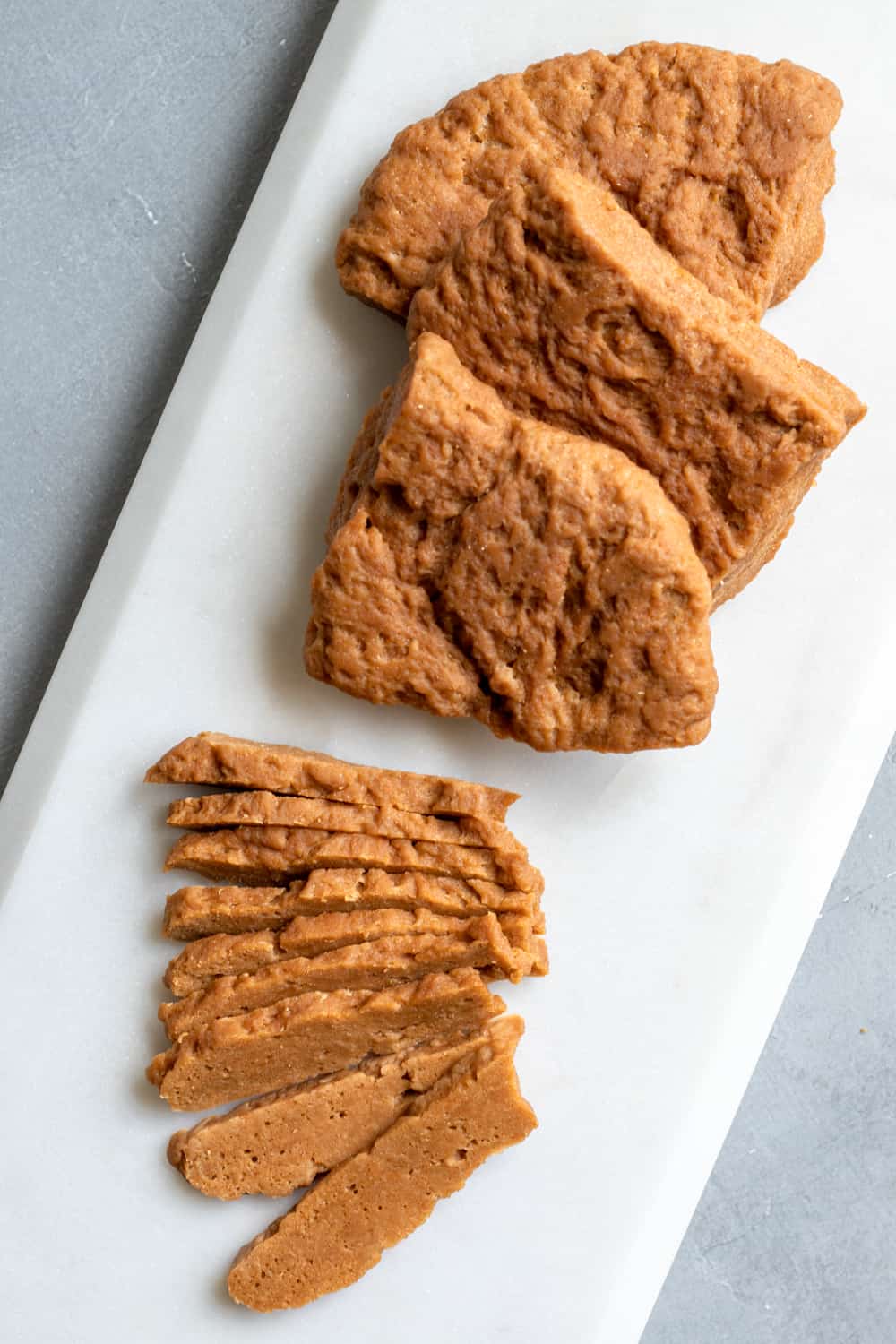
📩 Email me the recipe!
We respect your privacy. Opt out anytime.
Seitan is often affectionately referred to as "wheat meat" and has been popular with vegans and vegetarians for decades. But its origins go back MUCH farther than that!
Yet outside of the plant-based community, seitan still isn't as well-known as other popular vegan "proteins" like tofu and tempeh, for example.
However, as more and more people decide to reduce their meat consumption, seitan will hopefully continue to grow in popularity. I've been cooking with seitan for almost 13 years now, and am here to wholeheartedly cheer you on in your seitan-making adventures!
Jump to:
- What is seitan?
- What is the Washed Flour Method?
- Is it cheaper to make your own seitan?
- Money Saving Tip
- Ingredient Notes
- How To Make Seitan
- Is it better to steam or simmer seitan?
- Flavor Variations
- How to Season Seitan
- Seasoning Top Tip
- How to Serve Seitan
- Storing and Freezing
- More Seitan
- Recipe Video
- Recipe
- 💬 Comments
What is seitan?
Seitan (pronounced say-tan) is a high-protein, low-fat meat substitute made from gluten, the primary protein found in wheat. Vegetarian Buddhists enjoyed meatless dishes made with wheat gluten as far back as the 6th century.
The process is thought to have been developed either by Buddhist monks or by chefs who prepared food for Chinese emperors during their annual, week-long observation of vegetarianism.
So while the word "gluten" has taken on a negative connotation in today's world, it's really not a strange food at all. Of course, seitan should certainly be avoided by anyone with Celiac disease or gluten sensitivity.
Seitan is extremely versatile and can take on any seasonings, spices, and flavors you choose. You can also form the seitan into different shapes for meatballs, roasts, burgers, jerky, steaks, and nuggets.
Seitan is made one of two ways, either using vital wheat gluten flour or the traditional method of washing wheat flour.
What is the Washed Flour Method?
The washed flour method involves making a dough with plain flour and water. The dough is then agitated under water until most of the starches have washed away. This leaves behind the gluten, which binds with itself and takes on a stringy, meaty consistency.
Not long ago there was a viral TikTok video demonstrating the "wash the flour" method. While people all over social media had their minds blown by the meaty result and how much it looked like chicken breast, vegans everywhere were like, "Yes, seitan is amazing... we've been telling y'all this for years!"
Some people prefer the washed flour method, claiming that the end result has better flavor and texture. But most of us, myself included, don't have the time or patience for it! Thankfully, it's easy to find vital what gluten in stores, which makes homemade seitan much easier and more accessible.
Another perk of using vital wheat gluten is that it's very easy to build tons of flavor directly into the seitan. My vegan chorizo and vegan pepperoni recipes are perfect examples.

Is it cheaper to make your own seitan?
Yes! While I appreciate the pre-made seitan available in stores, the added convenience gets expensive very quickly. With costs ranging from $6 to $8 for a 4-serving package, that puts this versatile plant-based protein out of reach for many people.
To give you an idea how much you can save, let's do a quick comparison. Bob's Red Mill is the most common brand of vital wheat gluten found in stores here in the U.S. So I'll use it for our calculation, but keep in mind you can find vital wheat gluten even cheaper online!
At our local Ingles (a North Carolina-based grocery chain), a 22 ounce bag of vital wheat gluten costs about $8.
That 22 ounce bag will make FIVE batches of the recipe I'm sharing today, which equates to 5 pounds of cooked seitan!
Compared to $6 - $8 for an 8 ounce package, you can see how much more affordable it is to make your own seitan - even after factoring in the cost of the other ingredients!
Money Saving Tip
Be sure to keep an eye out for sales because you never know when you'll come across a big jackpot. At a local discount grocery we regularly see vital wheat gluten on sale for $2.99.
When you have an opportunity to stock up, store the vital wheat gluten in the freezer to extend the shelf life.
Ingredient Notes
- vital wheat gluten - Currently I use this one from Anthony's.
- chickpea flour - This tenderizes the seitan by disrupting the gluten formation. You can also use other types, such as oat flour or all-purpose.
- nutritional yeast - Adds umami and also helps tenderize the seitan. I recommend a non-fortified brand like this one by Sari Foods.
- smoked paprika - Optional; adds color and a subtle smoky flavor.
- soy sauce or tamari - Adds saltiness, umami, and depth of flavor.
- balsamic and apple cider vinegar - Vinegar rounds out the flavor profile and helps disguise the subtle bitterness of vital wheat gluten.
- fat - Including a little bit of oil or other fat improves the overall flavor and tenderizes the seitan. If you avoid oil, a spoonful of tahini, peanut butter, or almond butter also works.
See recipe card below for amounts and full instructions.
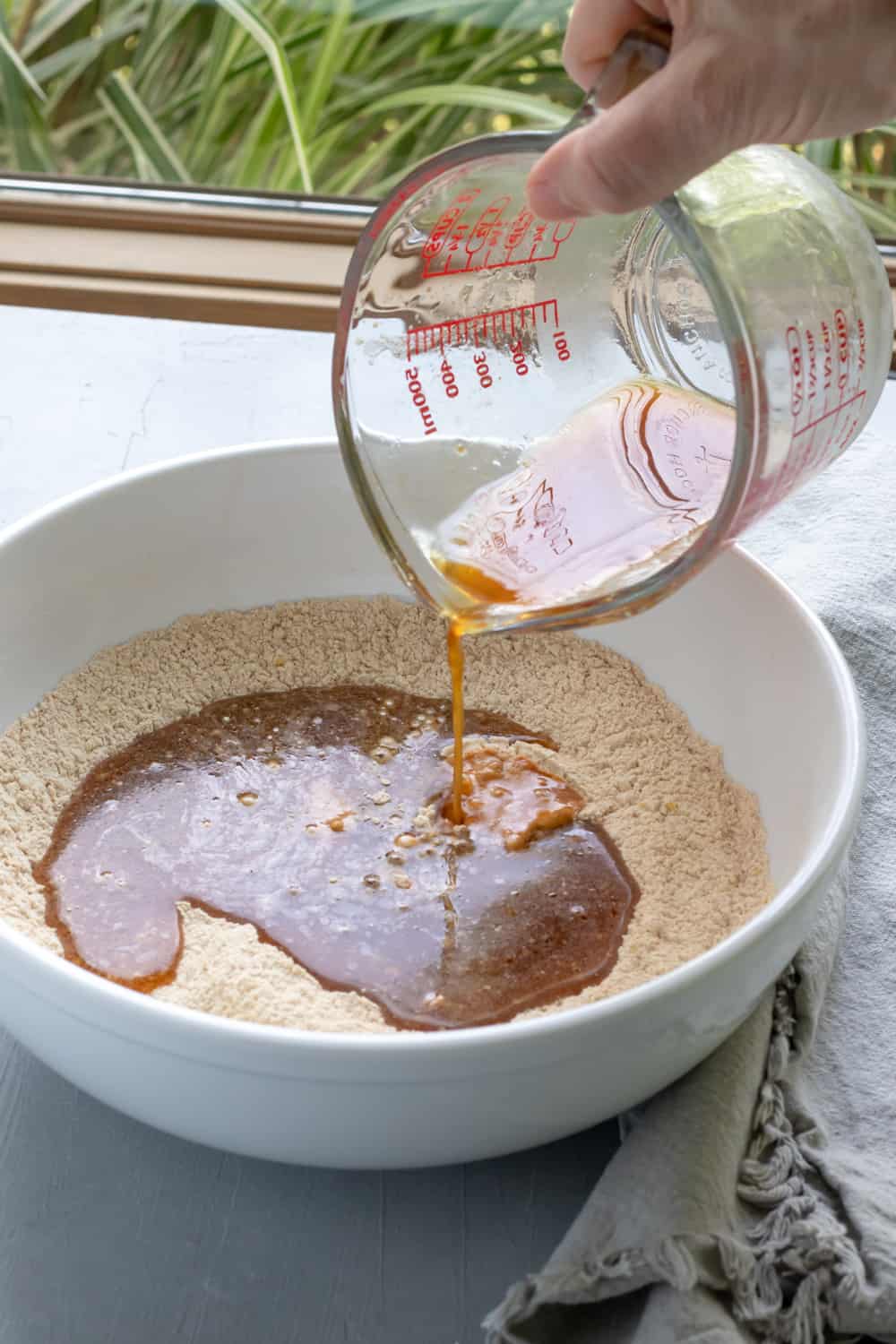
How To Make Seitan
Be sure to watch the video (below) to see how easily the recipe comes together.
- First, set up a steamer basket, or use the steam function on an Instant Pot.
- In a large bowl whisk together the dry ingredients. In a separate bowl whisk together the liquid ingredients.
- Pour the wet ingredients into the dry, and stir with a large spoon until a soft dough forms. Transfer the dough to the counter top or other solid surface and knead it for a few minutes.
- If making nuggets, tear off pieces of dough. For larger steaks, use your hands to stretch the dough into an approximately ¾-inch-thick rectangle. Cut into 4 equal-size pieces.
- Place in the steamer basket. Cover the pot, and set a timer for 15 minutes. At the 15 minute mark, flip the seitan steaks (be careful of the steam), and set the timer for an additional 15 minutes.
- Use tongs to remove a piece, and place it on a cutting board. The center should feel very firm when pressed with the tongs. You can also slice it through the center to check for doneness. If needed, steam for another 5 to 10 minutes.
*Steaks usually require about 5-10 minutes longer than smaller nuggets. - Transfer the seitan to a plate to cool. Use in your favorite saute or stir fry, or refrigerate for later use.
After chilling in the fridge overnight, the seitan becomes even meatier and firmer.
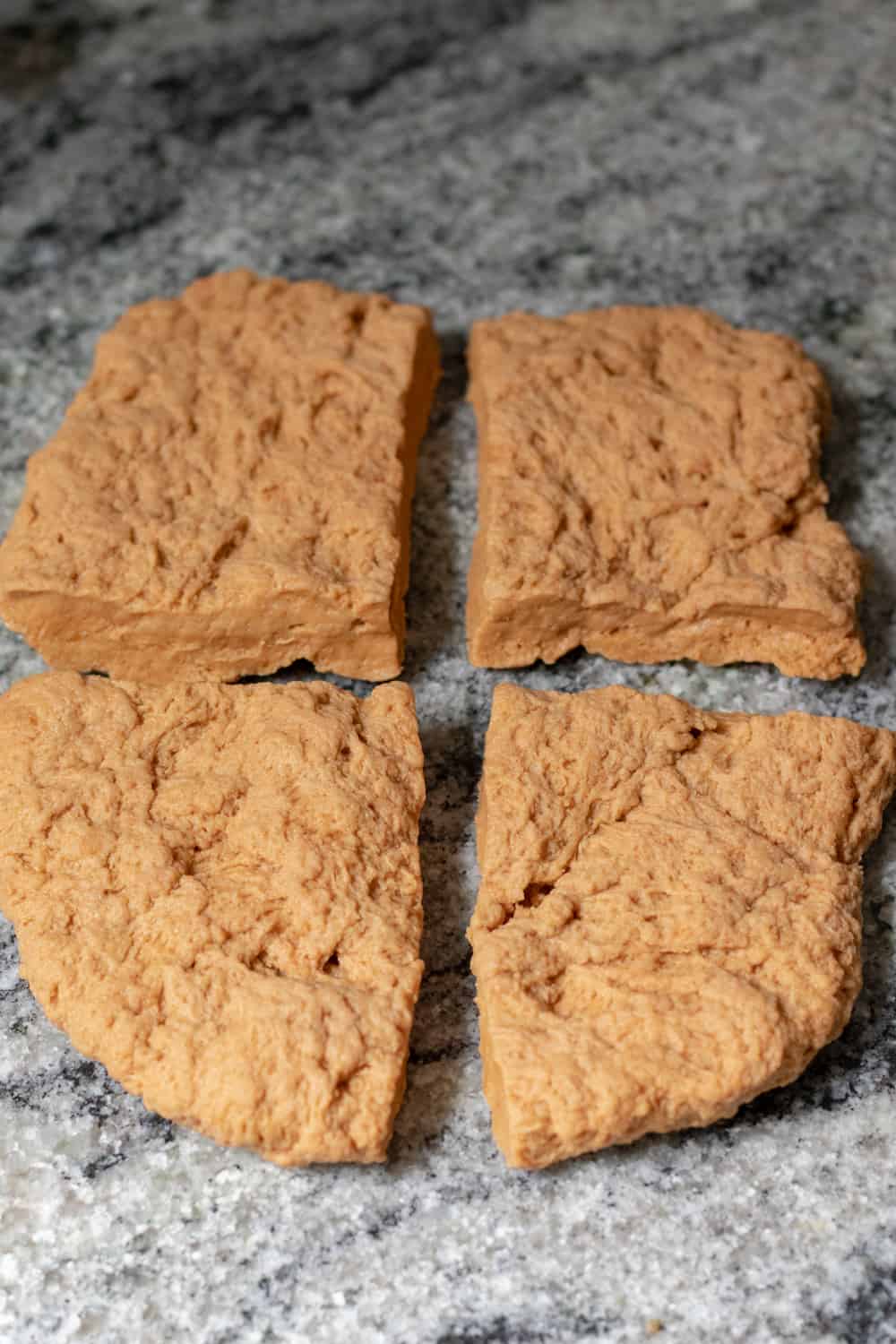
Is it better to steam or simmer seitan?
Most basic seitan recipes call for simmering, and honestly, that's how I cooked it for many years. But I now prefer to steam seitan for a few reasons.
- It's quicker.
No matter which cooking method you choose, the amount of time ultimately depends on the size of the pieces of dough. But in general, steaming takes about 30 minutes, whereas simmering takes closer to an hour. - Steaming uses less water.
To steam the seitan steaks you'll only need a couple of inches of water in the bottom of a pot versus needing to fill a large pot with water. Plus, simmering requires additional soy sauce or salt to season the water. - Steamed seitan stays more dense and doesn't absorb as much water.
When simmered, the dough absorbs quite a bit of the cooking liquid, giving it a higher water content. This makes it more challenging to get a good sear on the outside of the seitan if you want to pan-fry it immediately afterward or use it for a stir fry.
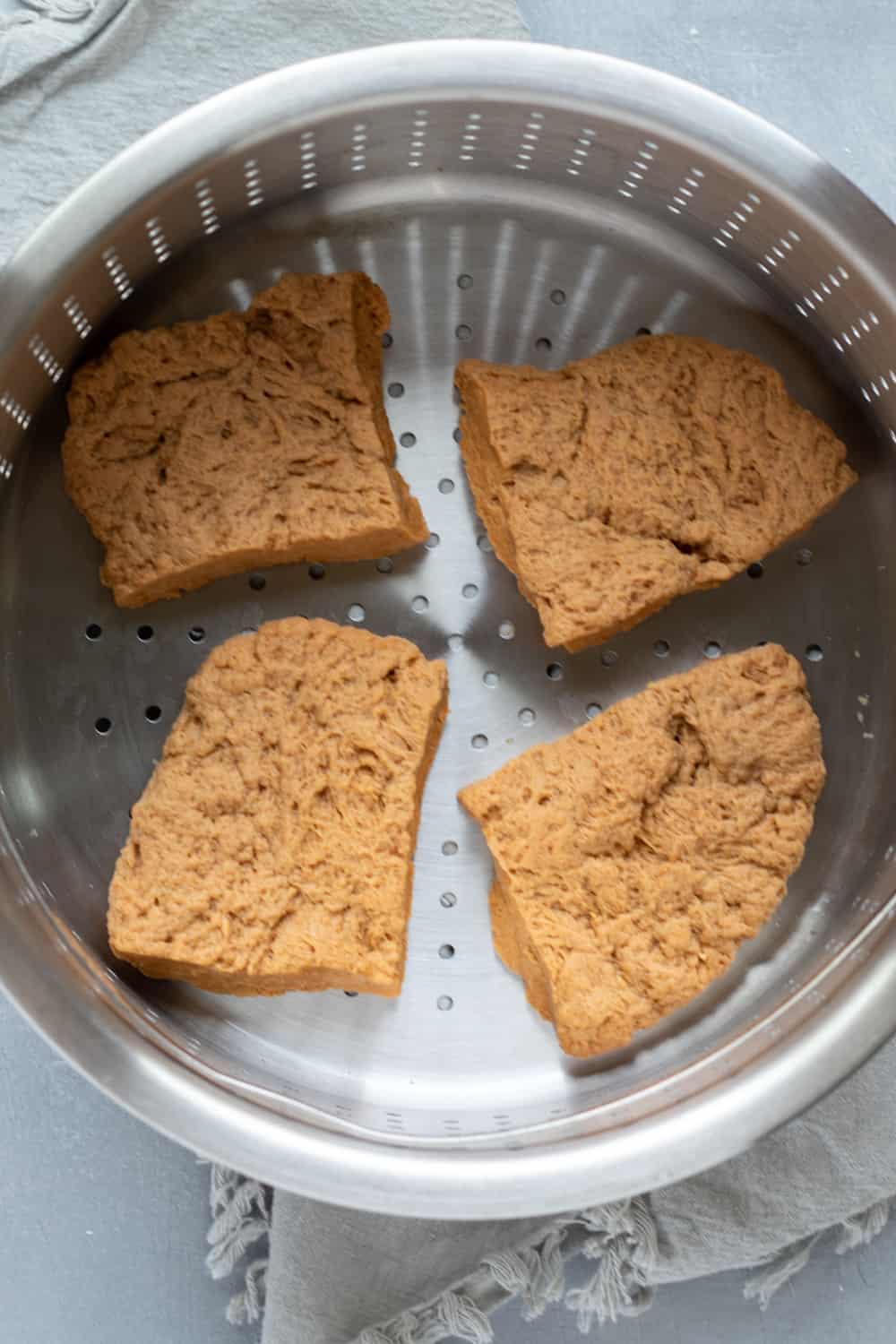
In the photo below you can see a previous batch that was simmered. Another issue with simmering that often trips people up is keeping the simmer low enough.
If the seitan boils, it will get puffy and lose some of the desirable, dense, and meaty texture.
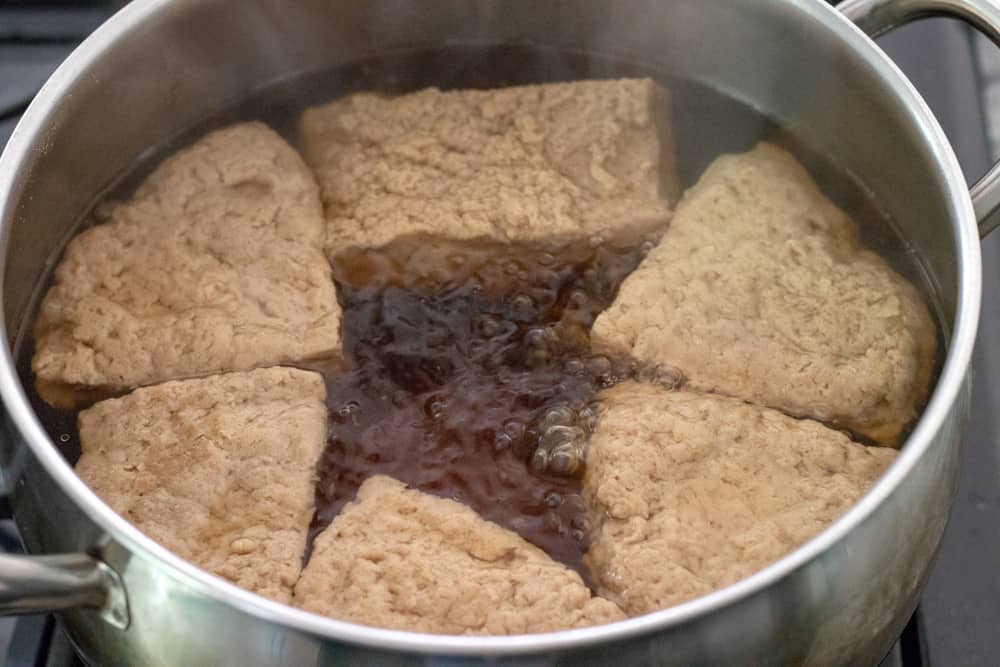
Flavor Variations
- Vegan chicken-style seitan (pictured below) - Omit the smoked paprika and onion powder, and add 1 teaspoon poultry seasoning blend. If desired, instead of forming the dough into steaks, simply tear it into chunks or nuggets.
- Vegan beef - Use lesser amount of salt, reduce the onion powder to ½ tsp, and add 2 tsp of my homemade vegan beef broth mix or another vegan beef bouillon.
Related: Don't miss this new recipe for seitan chicken nuggets! They're SO easy, taste great plain or breaded. My favorite way to cook them is in the air fryer!
How to Season Seitan
The seasonings in this recipe are meant to be fairly neutral. I wanted to create a basic seitan that's flavorful enough to stand on its own, but not so strongly seasoned that it can't transition into another dish, like an Asian stir fry or our favorite fancy dinner, Seitan Bourguignon.
I didn't necessarily try to replicate the flavor of Westsoy's seitan, but making a product similar to that is what I had in mind with this recipe.
If you want to add spiciness or something like a poultry seasoning blend, go for it!
Seasoning Top Tip
When salting the seitan dough, keep the final dish in mind. If you plan to serve the seitan as-is, you'll want to include a bit more salt, as described in the recipe. But if you plan to pair it with a salty sauce, you can reduce or omit the sea salt.
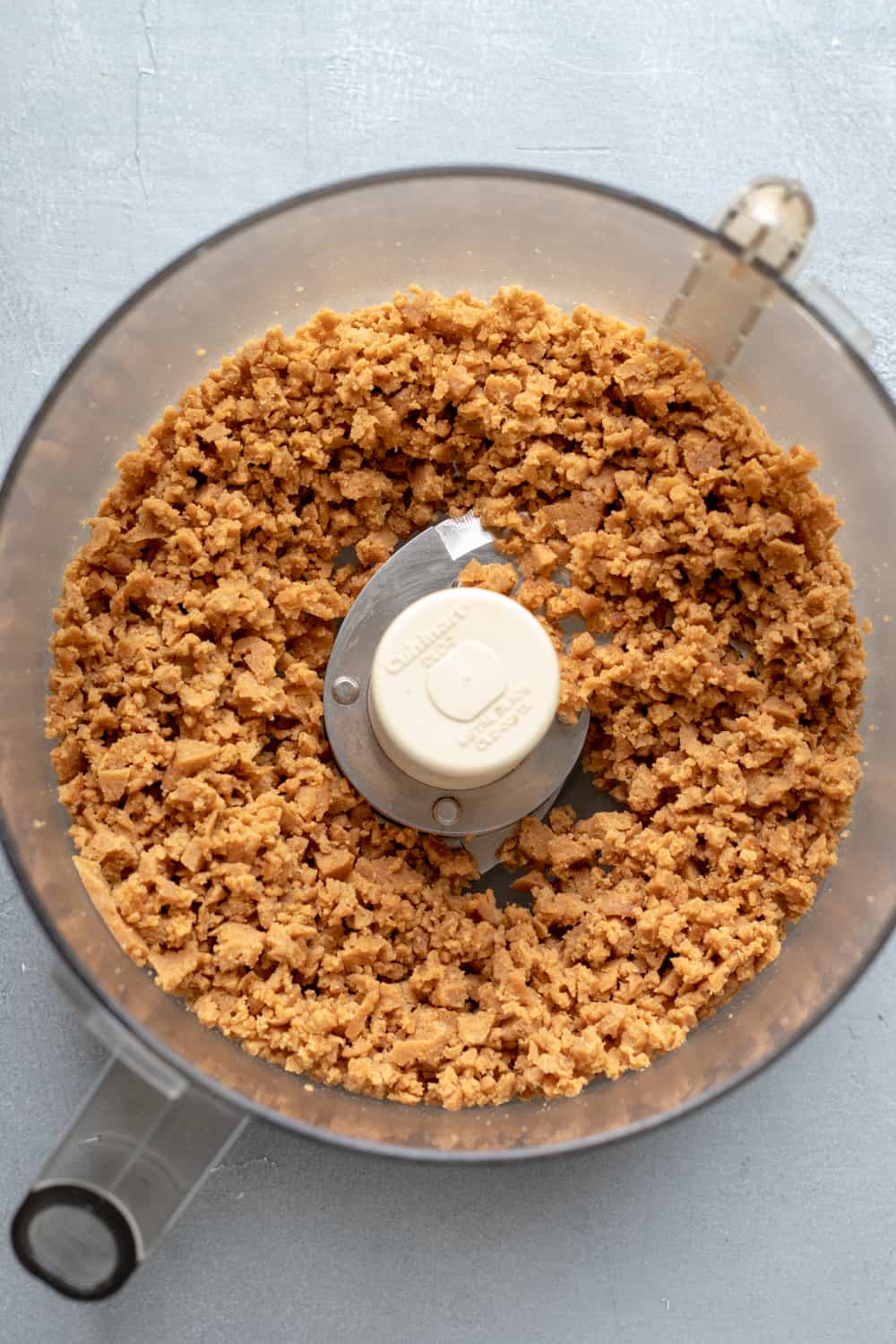
How to Serve Seitan
- You can slice the seitan for sandwiches and wraps.
- Cut it into cubes for salads.
- Pulse seitan in a food processor for a ground texture perfect for taco bowls, nachos, burritos, and pizza. Try this vegan larb recipe using crumbled seitan. It's a fantastic vegan appetizer.
- You can also use seitan in a quick weeknight saute:
- Heat a skillet over medium heat. Add a tablespoon of oil and some chopped onion, mushrooms, and peppers. Cook for about 5 minutes or until the onion is translucent.
- Add crumbled or cubed seitan and a few dashes of chili powder and cumin. Cook until the seitan is hot and the veggies are as tender as you like.
- Stir in some salsa, and serve with rice, avocado and fresh cilantro. Such a simple and tasty meal!
Storing and Freezing
Let the seitan cool completely, then store in an airtight container in the refrigerator for up to 5 days. Seitan can also be frozen for up to 2 months.
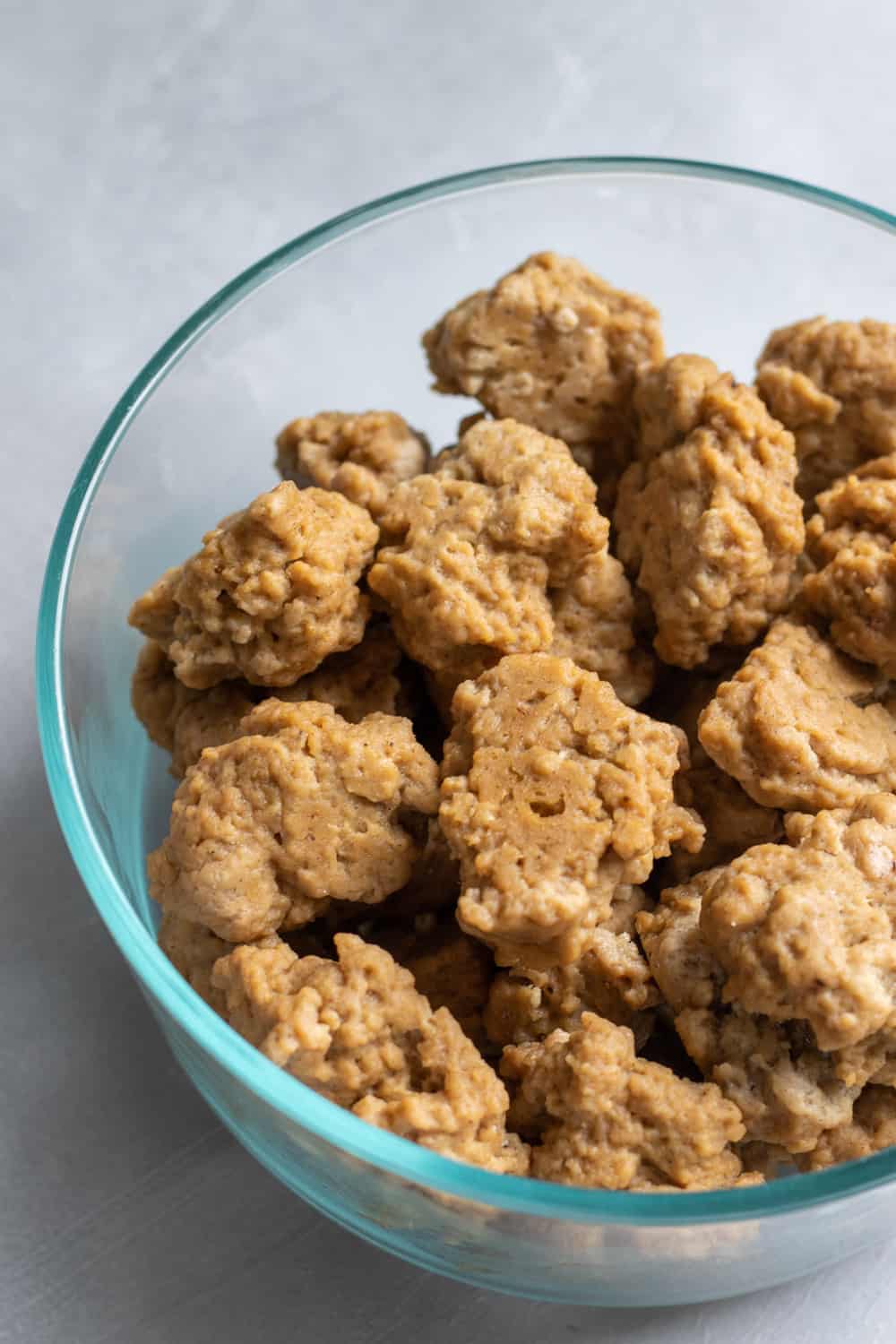
I hope you enjoy this easy seitan recipe as much as we do! If you try it be sure to leave a comment below and let us know you're favorite ways to use it.
More Seitan
Recipe Video
Recipe
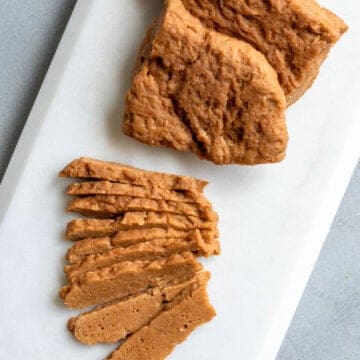
Easy Seitan Recipe (Seasoned and Versatile)
Equipment
Ingredients
Dry ingredients:
- 1 ¼ cups vital wheat gluten (150 g) - Weigh if possible. Otherwise, whisk the flour, then spoon into a measuring cup and level off the top.
- 3 tablespoons chickpea flour (22 g)
- 1 tablespoon nutritional yeast
- 1 teaspoon onion powder
- ½ teaspoon garlic powder
- 1 teaspoon smoked paprika, optional - For "chicken" nuggets, as mentioned in the post, replace with 1 tsp poultry seasoning.
- ¼ to ½ teaspoon fine sea salt - *Use less salt if you plan to pair with a salty sauce.
Wet ingredients:
- ⅔ cup vegetable broth
- 2 tablespoons soy sauce - or tamari
- 1 tablespoon balsamic vinegar
- 2 teaspoons apple cider vinegar
- 2 cloves garlic, grated on a microplane
- 2 tablespoons olive oil
Instructions
- To steam the seitan (preferred cooking method), add a few inches of water to a large pot and set up a steamer basket. Make sure the water doesn't touch the bottom of the basket. Bring the water to a simmer.*See Notes for the simmering cooking method.
- In a large bowl whisk together the vital wheat gluten, chickpea flour, nutritional yeast, onion powder, garlic powder, smoked paprika and salt.
- In a separate bowl whisk together the broth, soy sauce, both vinegars, zested/pureed garlic, and olive oil.
- Pour the wet ingredients into the dry and stir to combine. Transfer to a solid surface and knead for 2 to 3 minutes. The dough should start to feel firmer and more resistant. Let the dough rest for 5 minutes, then knead a few more times.
- If making nugget-style chunks, tear off pieces of seitan from the dough ball. For steaks, use your hands to stretch the dough into an approximately ¾-inch-thick rectangle (refer to photos above). Cut into 4 equal-size pieces and place in the steamer basket. Cover the pot, and set a timer for 15 minutes.
- At the 15 minute mark, flip the seitan (be careful of the steam), and set the timer for 15 more minutes. Use tongs to remove one piece, and place it on a cutting board. The center should feel very firm when pressed with the tongs. You can also slice it through the center to check for doneness. If needed, steam for another 5 to 10 minutes. *Steaks usually require about 5-10 minutes longer than smaller chunks.
- Transfer to a plate to cool. Use in your favorite recipe, or refrigerate for later use. After chilling overnight, the seitan will be even meatier and firmer.
Notes
Estimated Nutrition (per serving)
Nutrition information is an estimate and will vary depending on the exact amounts and specific products and ingredients used.



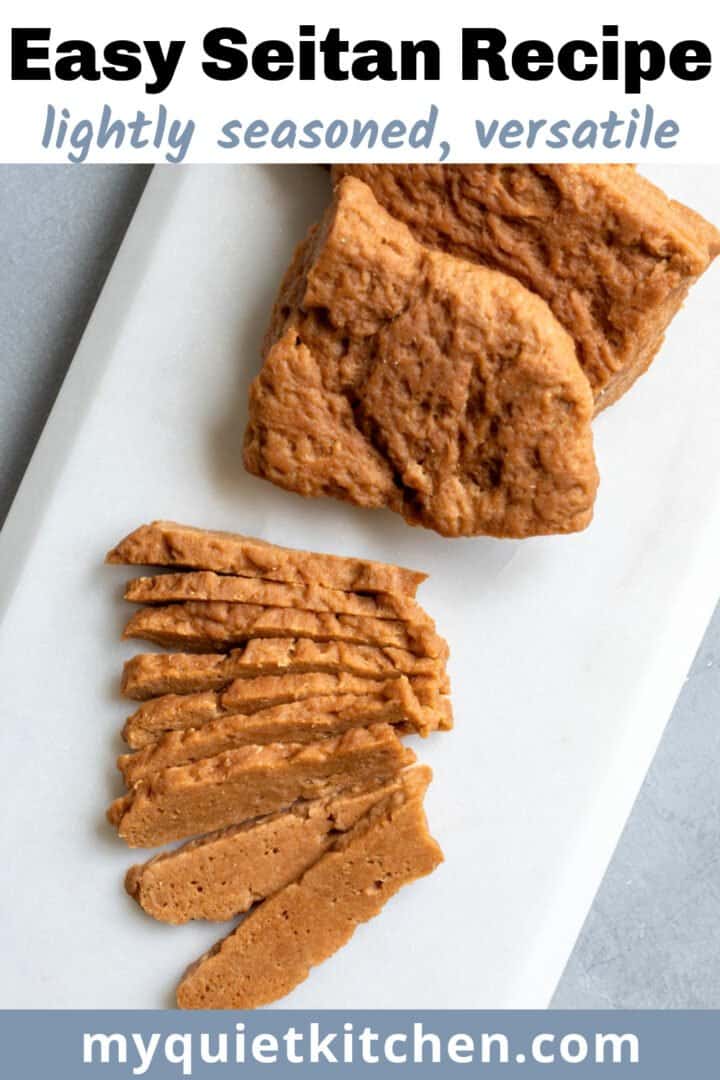

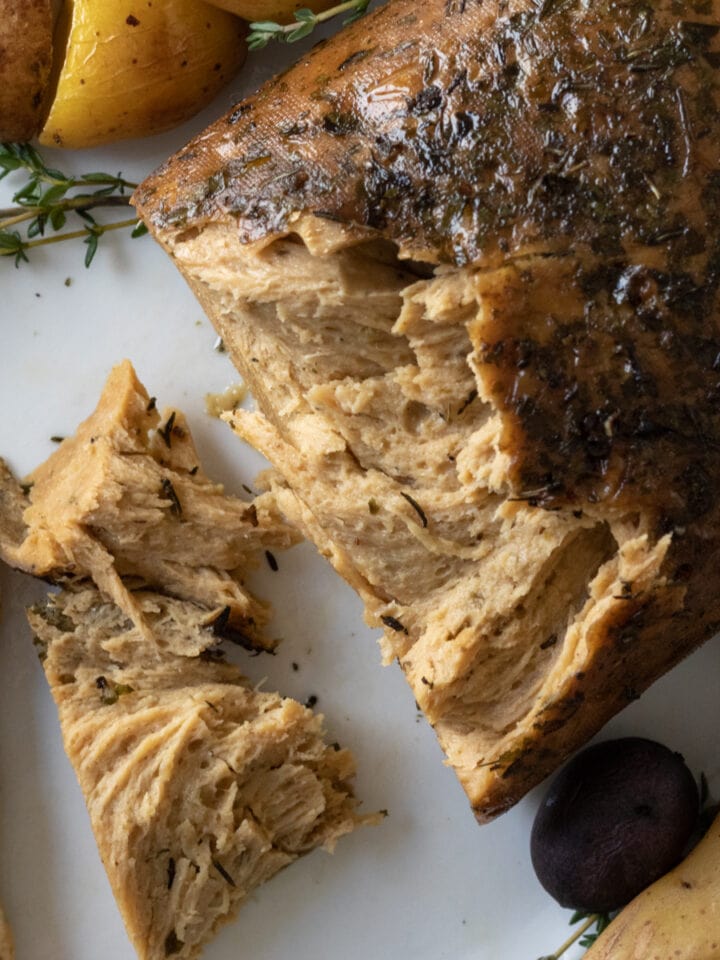
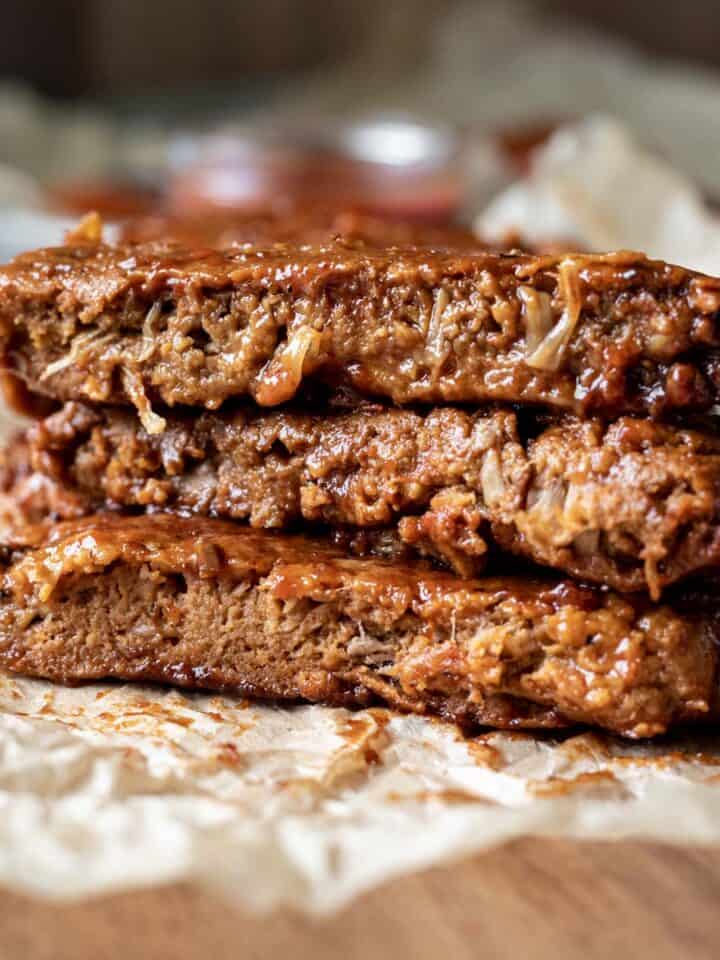
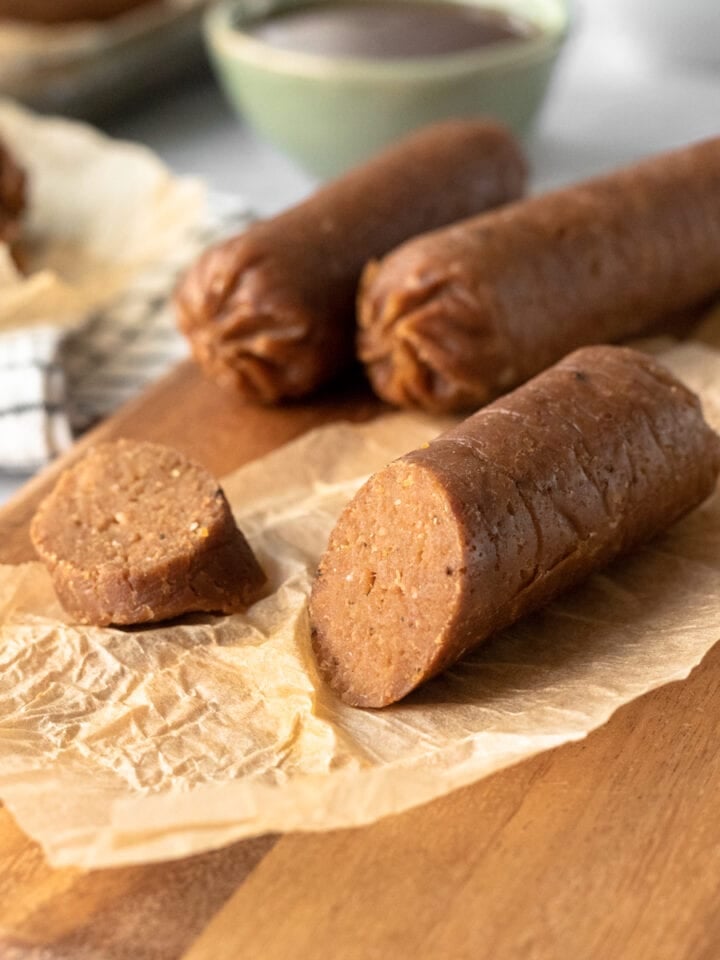
Meg
Hi, I wish I’d come cross your recipe before I started the one that’s steaming right now! I’m using a Thermomix. I used a tin of chickpeas plus the water, 220g vital wheat plus seasonings and then wrapped it tightly with baking paper before steaming. I’m definitely going to try your method next….thanks
Nannette
This is the most tender and flavorful seitan recipe I've ever made. I didn't knead the dough at all. I stopped working it as soon as the wet and dry ingredients were combined.
Roxy
This looks great and easy enough for a first timer.
What are your thoughts on using a bamboo steamer basket?
Dylan Friedman
I make this all the time for my salads - it is so easy and delicious! Really good for meal prep too.